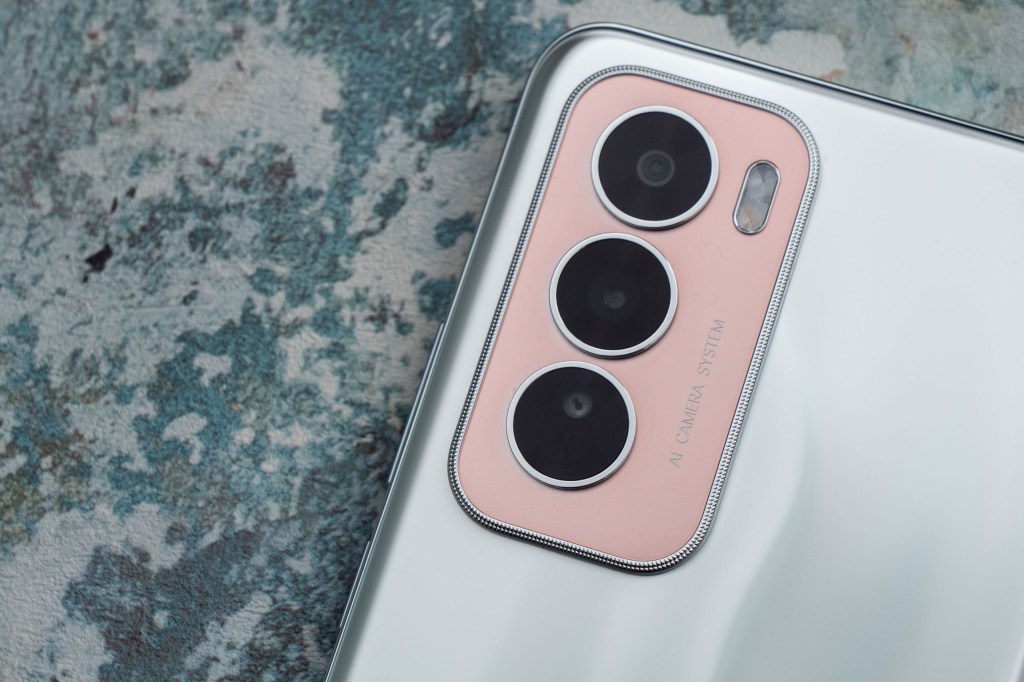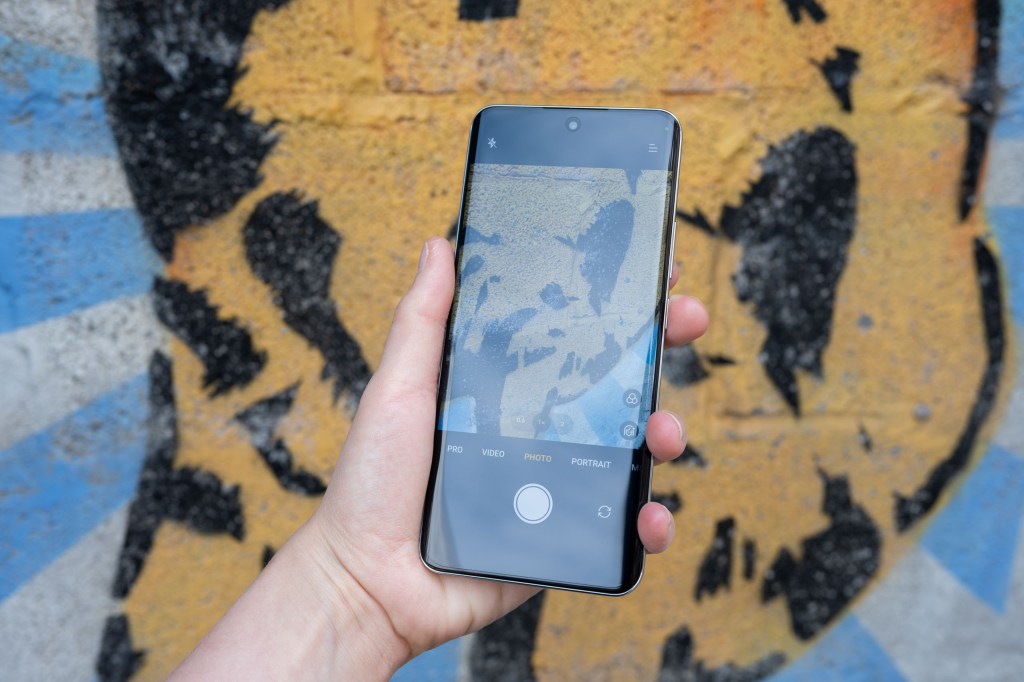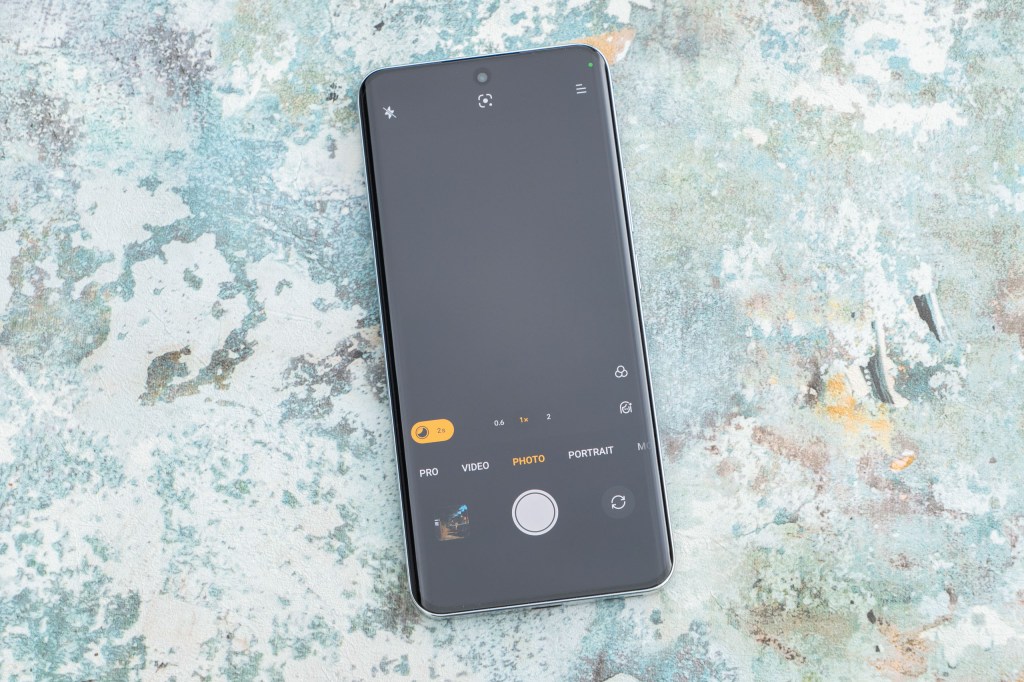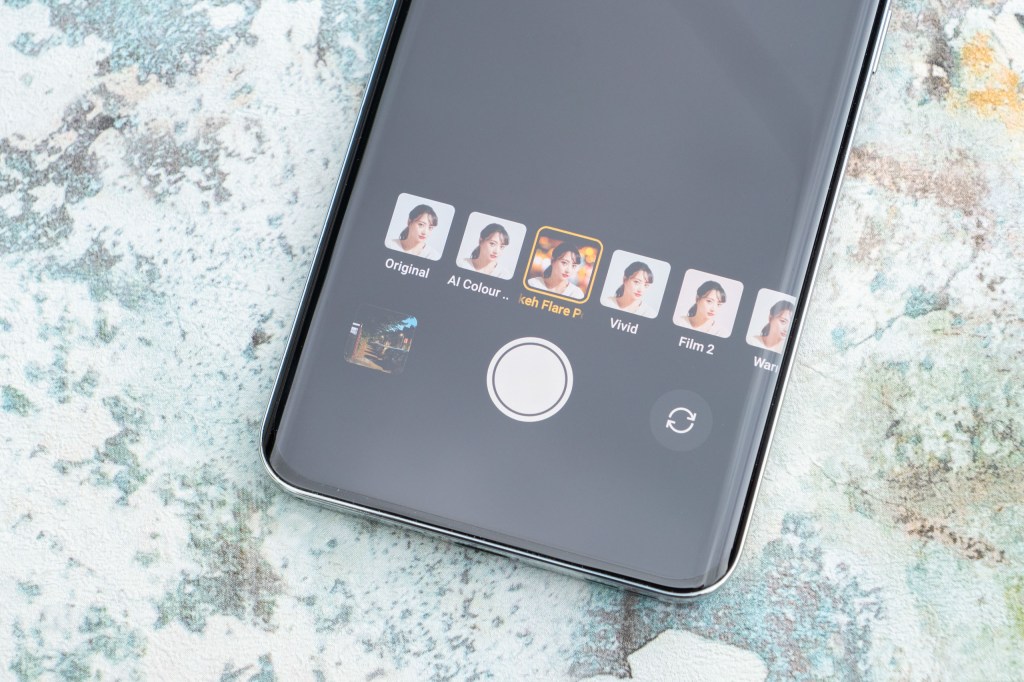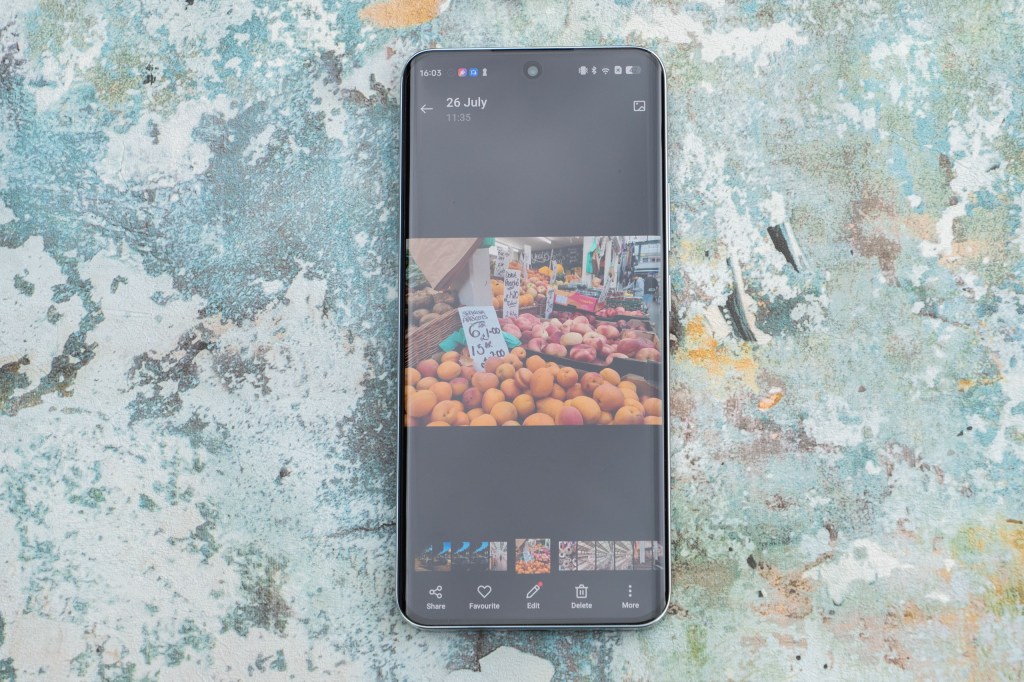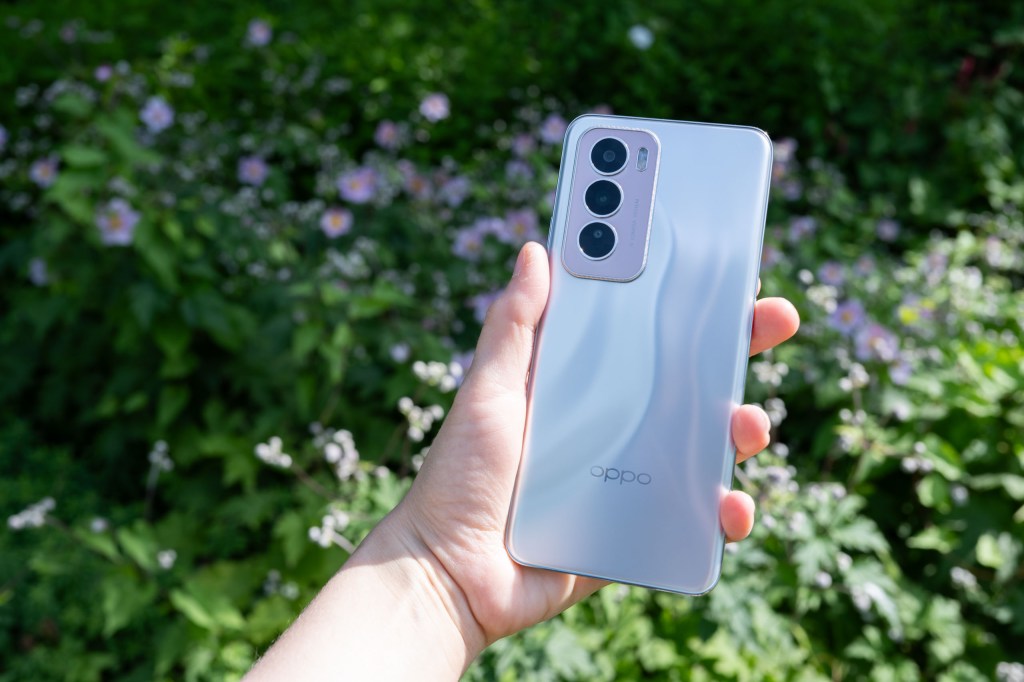Amateur Photographer verdict
With some good specifications and an attractive design, the Oppo Reno 12 sounds good in theory, but the results are mixed.- Good price
- 50MP main camera
- 32MP selfie camera with AF
- Not available in every market
- Poor macro mode
- No telephoto lens
Oppo Reno 12 at a glance:
- Price as reviewed: $499 / £400
- 50MP 1x camera, 26mm f/1.8 equivalent lens, OIS
- 8MP ultrawide camera, 16mm f/2.2 equivalent lens
- 2MP f/2.4 macro camera
- 32MP f/2.0 selfie camera with AF
- 4K 30fps video
- 6.7” screen, 120Hz, 1200 nits peak brightness
- 5000 mAh battery
- Color OS 14.1 based on Android 14
The budget smartphone market has lots of different options for those that don’t necessarily want to spend a fortune on a flagship phone, but still want to get some good shots.
For those on a low budget, the Oppo Reno 12 has some intriguing specifications, with it sitting below the slightly more advanced Oppo Reno 12 Pro device. At the time of writing, the Reno 12 isn’t available in every market, but it is expected to become more widely available soon, including in the UK from September. It costs around £400/$500 at the moment, with prices for all markets yet to be confirmed.
There’s a triple lens setup here, with two out of the three appearing to be exactly as the same as found on the more expensive Oppo Reno 12 Pro. You get a 50MP 1x camera, with a 26mm f/1.8 equivalent lens, plus an 8MP ultrawide lens. In place of the 12 Pro’s telephoto (2x) lens, there’s instead a 2MP f/2.4 camera. On the front of the camera you get a 32MP selfie camera (the 12 Pro has a 50MP device). 32MP is still very good for a budget phone – when you consider that many flagships don’t even have a selfie camera as good as this.
Other specifications include 4K video recording up to 30fps, a 6.7-inch AMOLEd screen, a large 5000 mAh battery, fast charging and an expandable memory via microSD card slot. The Oppo Reno 12 is fitted with a ColorOS 14.1 operating system, which is based on Android 14.
How we test phones
We review smartphones from the perspective of choosing one for its photography and camera performance. We look at what the Oppo Reno 12 offers, and the features included for photography and video, paying particular attention to the cameras on the phone, photo editing capabilities, as well as the output from each different lens.
Oppo Reno 12 – Handling and Design
Despite being a budget option, the Reno 12 still has a pretty nice design, with nicely rounded edges and a sleek appearance. I’ve been using the “Astro Silver” colourway, which has a nice effect as you turn it in your hand. There’s a good screen to body ratio, so it really makes the most of the available real estate of this 6.7-inch device, with just a hole punch cut out for the selfie camera.
The brightness of the Reno 12 maxes out at 1200 nits. That’s pretty good for a phone at this price point and it does a decent job of showing off your photos and videos. Corning Gorilla Glass 7i is used for the screen, which is not super tough but should withstand some light scratches. The phone is rated as IP65 for dust and waterproofing, making it resistant to splashes and rain, but you wouldn’t want to fully submerge it.
The three cameras on the back of the phone are arranged in a simple line. It’s a straightforward design that nonetheless looks quite elegant.
Oppo Reno 12 – Native camera app
There’s quite a few different shooting modes and options in the Oppo Reno 12’s native camera app. The default is “Photo” which is what you’ll likely use for most of your shots. There’s also a specific Night mode, as well as other commonly found options like Portrait and Panorama. There’s a Pro mode which gives you the opportunity to change things such as shutter speed, but there’s no raw format shooting available.
Unlike with the Oppo Reno 12 Pro, there is a macro mode, which makes use of the 2MP macro camera. With it, you can get as close as 4cm from the subject. It doesn’t switch on automatically however, you’ll need to activate from the “More” tab.
When using the standard Photo mode, you can shoot with the 0.6x and 1x lens, with a 2x digital option also shown on screen. You can pinch to zoom further to 10x digitally. In this mode you can also add filters, switch on/off HDR, change aspect ratio and so on.
In the portrait mode, you can shoot at either 1x or 2x, with the 2x option being created by cropping into the 1x sensor as there’s no 2x lens on this model. You can add digital filters and do some retouching, but you can’t adjust the level of bokeh.
Oppo Reno 12 – Image Quality and Performance
As we usually find with smartphones, in good light you’ll find that the Oppo Reno 12 produces some nice images. The onboard AI can get a little bit enthusiastic with colour saturation when faced with blues and greens in the same scene, but otherwise the colours are pleasingly vibrant. There’s a good amount of detail shown from images shot with the 1x lens.

Only having an 8MP sensor means that the ultrawide is a little more smudgy, as I’d expect, but if you’re only looking at your images on a smartphone screen then they’ll look satisfactory.
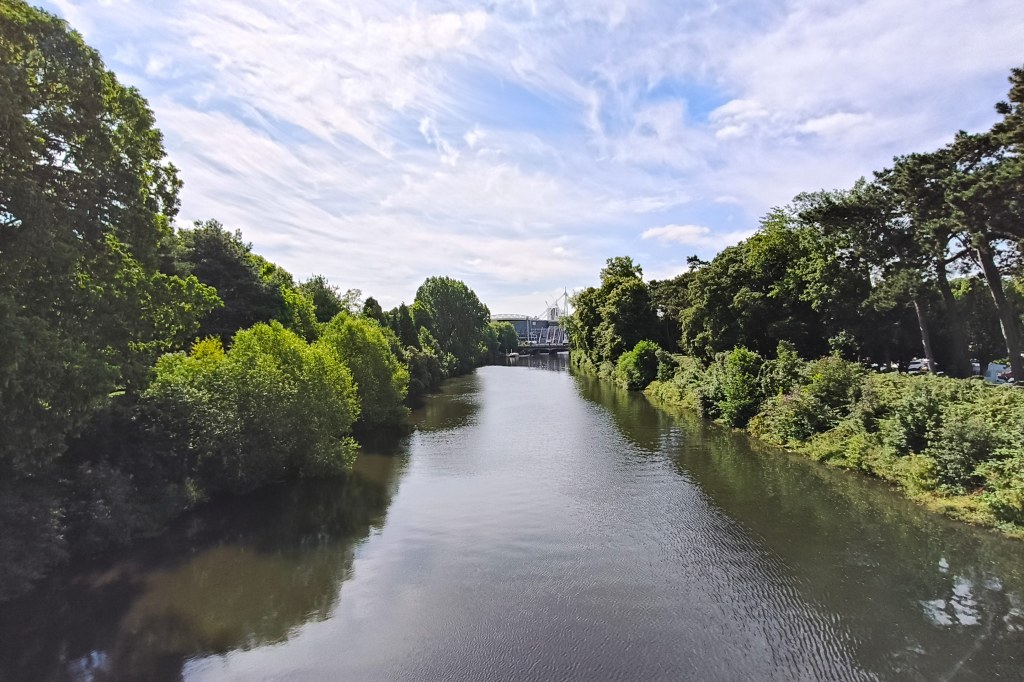
We don’t have a telephoto lens here, but there is 2x digital crop available. You lose quite a lot of detail here if you’re examining closely, so although the pictures are just about useable at small sizes, I’d probably avoid using it too much. The digital 10x zoom really isn’t worth using at all unless desperate.
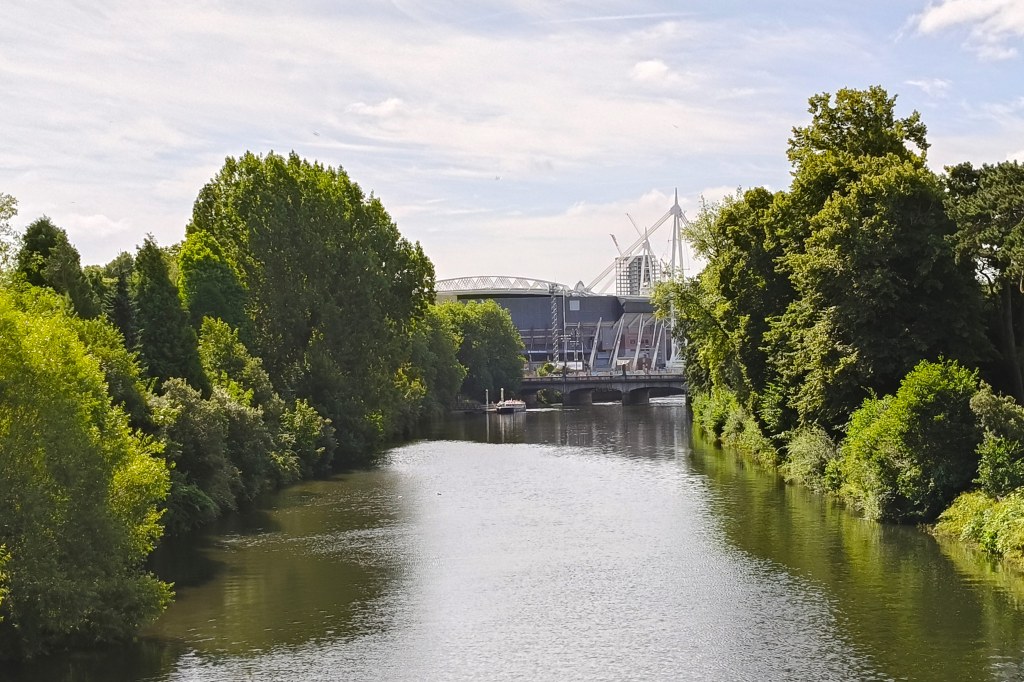
With the Oppo Reno 12 Pro, I complained that you don’t get a macro mode. Well, be careful what you wish for – there’s one here for the Reno 12 but it is absolutely terrible. It’s only 2MP so images are tiny and smudgy. You need to get 4cm close to a subject – that generally means blocking out available light, which doesn’t help matters. Even if you can avoid doing that, the results are still pretty poor. You can shoot reasonably close with the 1x lens, so I’d suggest pretending the macro lens doesn’t exist and use that instead.


Night mode puts in an “OK” performance. It’s nothing revolutionary, with the best results from the 1x lens. I wouldn’t expect amazing low-light performance from a cheap smartphone, so again if you’re only sharing at small sizes it’s more than usable.
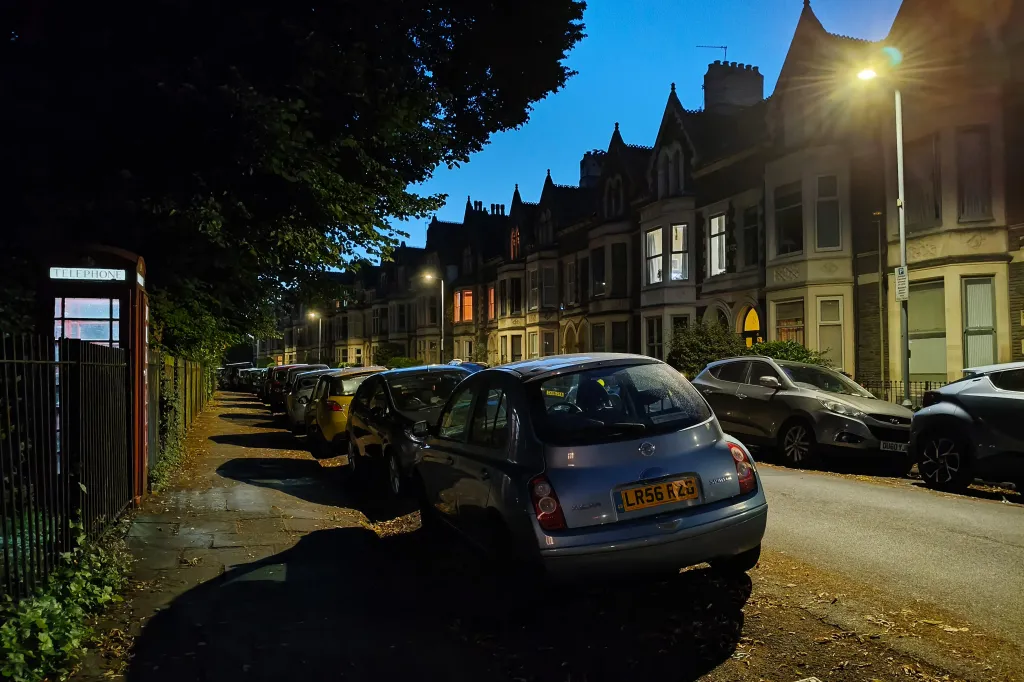
On a more positive note, the Portrait mode does a good job to produce some nice results that look fairly natural with decent outlines. I’ve seen worse results from more expensive phones, so this is a pleasant surprise.

There’s similar results from the selfie camera. With its 32MP resolution and AF, you get a good performance, with it even producing better results than some flagships. Again, if selfies are your thing, but you don’t want to spend a huge amount, this could be the phone for you.

For video, the phone creates perfectly usable clips for everyday usage. It’s probably not a phone that content creators would want to use, but for most ordinary users it’s more than adequate.
Oppo Reno 12 – Value for Money
At around £400/$500 this is very much a budget phone, perhaps edging towards mid-range. If you don’t have a lot to spend, but still want something good for photography, then you might consider it, depending on what you like to photograph.
There are some better options out there – for example the OnePlus Nord CE4 Lite, but perhaps if you like portraits and selfies, then the Oppo might just about win your affection. There’s also the Samsung Galaxy A35 and A55 well worth considering.
Oppo Reno 12 – Verdict
On paper, there’s a lot of good specifications on offer with the Oppo Reno 12. For a budget smartphone, to have a 50MP main sensor is pretty good going. The fact it’s joined by a mediocre ultrawide and a terrible macro lens is a shame, but not wholly unexpected at this price point.
With the main lens, you can get some nice results. If you have a lot of blue and green in a scene, watch out for overprocessing and whacked up saturation, but otherwise the images are nice enough.
Overall, this is a good phone at its price, but right now there are generally better options out there. Take a look at the Google Pixel 8a, the OnePlus Nord CE4 Lite and depending on the market you’re in, the Tecno Camon Premier 5G.

Specifications
| Wide camera | 50MP 1/1.95” sensor, 26mm f/1.8 equivalent lens, OIS |
| Ultra-wide camera | 8MP 1/4.0” sensor, 16mm f/2.2 equivalent lens |
| Macro camera | 2MP f/2.4 |
| Selfie camera | 32MP with AF |
| Display | 6.7-inch AMOLED 2412 x 1080 pixels, 394ppi, 120Hz, 1200 nits peak brightness |
| Operating system | Color OS 14.1, based on Android 14 |
| Dimensions | 161.4 x 74.1 x 7.6mm |
| Weight | 177g |
Related reading:
- OPPO Reno 10 review
- OPPO Reno 8 Pro 5G review
- True Colours: OPPO and Hasselblad team up
- OPPO Find X5 Pro review
Follow AP on Facebook, Twitter, Instagram, YouTube and TikTok.


